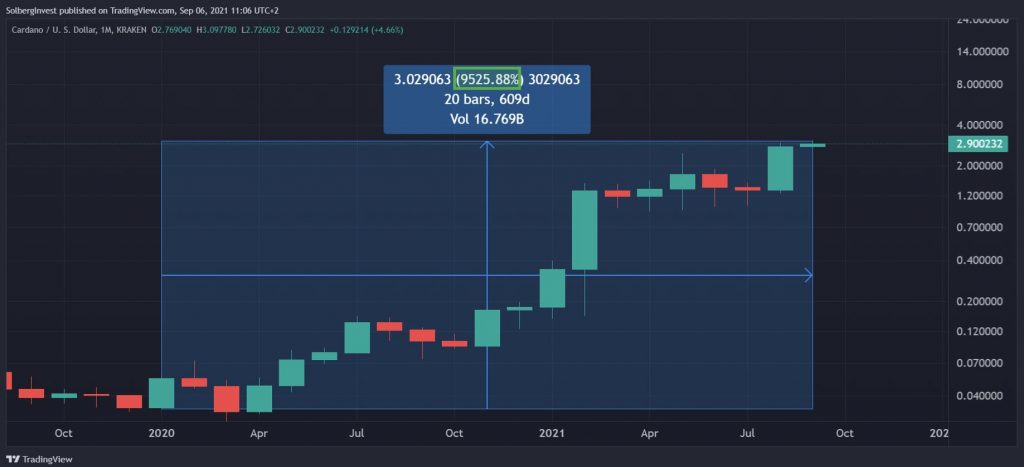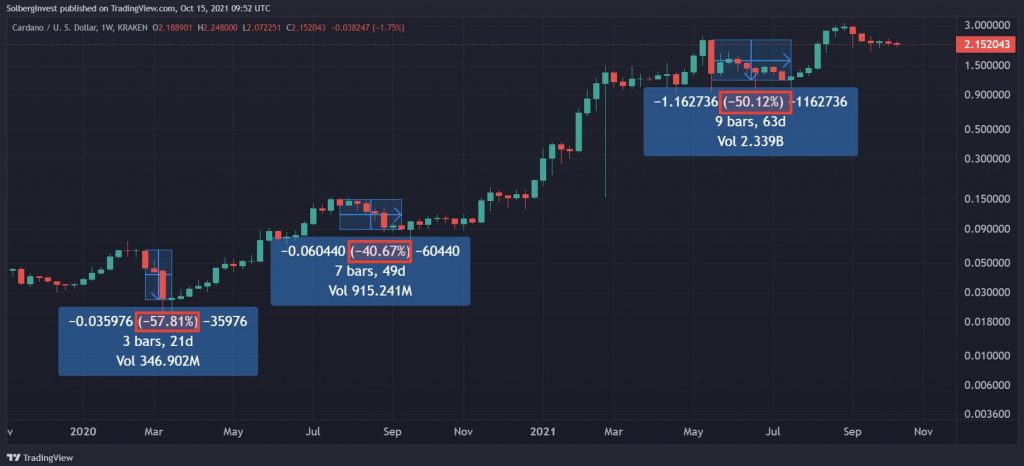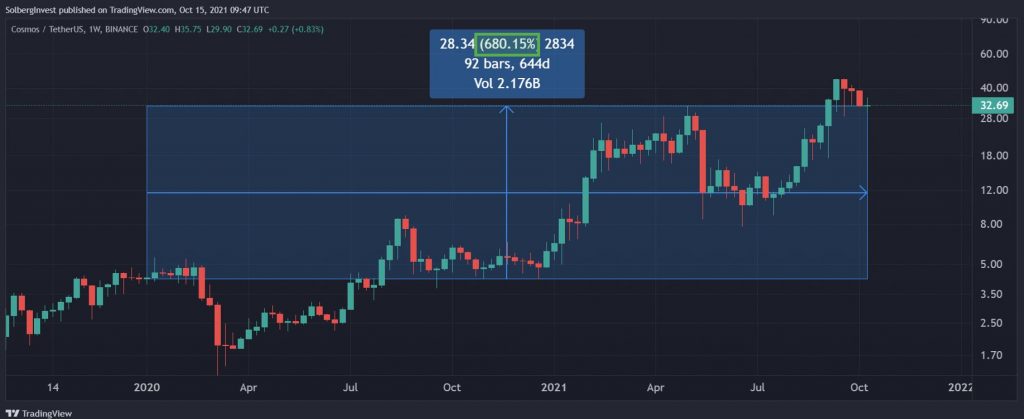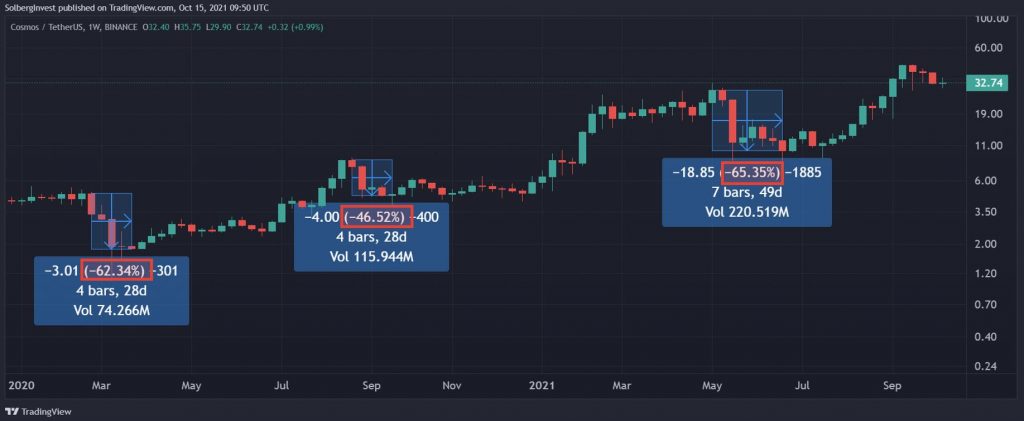The Internet of blockchains VS an Ethereum killer; These two projects are cutting-edge innovators of blockchains, Dapps, and scalability.
Conceived in 2014 but technically launched in 2016, Cosmos is a platform that’s been pushing the decentralized cryptoverse to become faster, easier, and more practical for years. And they love to connect creativity with technology!
Cardano, another decentralized blockchain was launched in the same year by Ethereum Co-Founder, Charles Hoskinson. His primary goal is to bring positive global change through cryptocurrency technology. This platform wants to make the world a better place through crypto!
Cardano is built to provide a functional and fair financial system for people who no longer have confidence in the current centralized one. Improving on what Ethereum started, Cardano uses secure, fast, and environmentally conscious methods so that everyone may enjoy the wonders of blockchain technology. However, Cosmos already has implemented a faster interoperable way to thwart forward in the universe of blockchains, creating a true ecosystem. The question really is, who will the people trust more in the long run?
Let’s take a closer look at what these platforms are all about as well as their tokenomics, similarities, and differences.
What Are Cosmos And Cardano?
Cosmos is deemed the internet of blockchains because they are an ecosystem of blockchains that are interoperable. They are a project that works on speeding up blockchain transactions, lowering fees, and eradicating scalability problems. They want blockchain creators to experience less complexity and more ability.
Cosmos’s mission is to simplify and connect blockchain technology to developers by taking out the mystery of decentralized apps. They believe that communication between co-existing blockchains is essential to a free crypto world so there won’t be a reliance on only one block. Originally, blockchains transacted slow and could never share information with each other.
Their website says:
“Cosmos is an ever-expanding ecosystem of interconnected apps and services, built for a decentralized future.”
ATOM is their coin with a supply of 260,906,513 coins.
Cardano, one of the Ethereum killers, is a believer in co-existing blockchains as well; but has a primary focus on community and smart contracts. The technology they develop goes through meticulous peer reviews before any major ideas are approved, which helps maintain a stable platform for smart contracts and Dapps. This really says something about them – open-sourced with a secure network.
The continued protocol can be further explained via Ouroboros. Cardano’s website says:
“Ouroboros is the first peer-reviewed, verifiably secure blockchain protocol, and Cardano is the first blockchain to implement it. Ouroboros enables the Cardano network’s decentralization and allows it to sustainably scale to global requirements without, crucially, compromising security.”
Cardano is one of the largest blockchains to use proof-of-stake (PoS) as a successful consensus mechanism. Along with that security-power, comes their dedicated declaration of the restoration of faith in the global system.
ADA is their native token with a max supply of 45 billion coins.
Suggested reading:
Cosmos (ATOM) vs Solana (SOL): Which Is The Better Investment?
Cosmos (ATOM) vs Algorand (ALGO): Which Is The Better Investment?
Avalanche (AVAX) vs Cardano (ADA): Which Is The Better Investment?
How Are Cosmos And Cardano Similar?
- OPEN-SOURCE. Cardano and Cosmos are open-source, meaning that the community can contribute to creating new and useful tools to improve their developments.
- MULTI-USE. Both are platforms for building decentralized apps and smart contracts; both can be used as peer-to-peer cryptocurrencies; both can be staked for rewards.
- CONSENSUS. Cosmos and Cardano both use proof-of-stake (PoS) to confirm transactions.
- SCALABILITY. They concentrate on providing easier methods for mass adoption and solving congestion and speed problems.
How Are Cosmos And Cardano Different?
- MARKET CAP RANK. Cardano has lived in coinmarketcap.com’s top 10 ranking system for quite some time; Cosmos has not yet entered.
- INTEROPERABILITY. Cosmos has interoperable support to help networks communicate with each other while Cardano isn’t there just yet.
- MAX SUPPLY. ATOM has a max supply of 260,906,513 and ADA has a huge max supply of 45 BILLION.
- MINING. According to coinmarketcap, Cosmos cannot be mined but are solely earned through staking; Cardano can be mined.
Tokenomics And Price History Of Cosmos And Solana:
Cardano:
- Market Cap: 45 billion
- Token: ADA. 16% went to original founders and the remaining 84% is up for grabs amongst investors
- Incentives: Cardano’s fundamentals allow investors earn rewards by running their own stake pool or by contributing their stake to stake pool run by someone else. Additionally, they can be staked on platforms such as Crypto.com, Kraken.com, Daedulas wallet, and more.
- Inflation: Aiming to become a deflationary asset by 2030, ADA is inflationary at a rate of 5.7%. However, it will decrease to eventually 0.9% per year up until then.
The historical returns of ADA, going back to January of 2020, is a whopping 9525%:

If you invested $1500 in ADA, it would now be worth $142,000!
To get an idea of how it performs when the going gets rough, let’s look at the big corrections ADA has seen since January of 2020 as well:

We see that the first correction was at 57.81%, the second 40.67%, and the third at 50.12%. The average comes out to be 49.53% – not too shabby for a cryptocurrency!
Let’s move over to Cosmos, and check out its tokenomics and historical price moves as well!
Cosmos:
- Market Cap: 260,906,513
- Token: ATOM. 20% distribution amongst founding companies and 80% to left available to investors.
- Incentives: Coins can be staked on several different platforms: Ledger, Binance, Coinbase, and more.
- Inflation: A higher rate of 7-20% was set in place to incentivize users into staking their tokens. Rates fluctuate depending on the overall staking percentage (goal of maintaining at least 66% staked).
According to Start It Up, targets of staking overall reside around the 66% range and inflation rates will raise/lower accordingly to encourage holders to contribute.
The historical returns of ATOM, going back to January of 2020, is a modest 680%:

This means that a $1500 investment in ATOM at the beginning of 2020 would have grown into $10,200 today.
Let’s check out how it did under harder conditions, and measure the corrections ATOM has seen:

We see that the first correction was at 62.34%, the second 46.52%, and the third at 65.35%. The average comes out to be 58.7% – high compared to ADA’s average of 49.53%.
PS:
I have a free newsletter where I send out technical analyses on Bitcoin, Ethereum, Cardano, etc. Also, I’ll give you helpful guides and reviews.
Get expert insights every week – Sign up for free below:
There are numerous other factors to consider, but I’ve covered enough to speculate on the…
Future Outlook For Cosmos And Cardano:
These projects are firm believers in keeping decentralization strong and that mindset could ensure their futures. Though Cardano’s increase is huge when compared to Cosmos, it doesn’t mean it nesseccarily will continue to outrank it in the future.
Cosmos could be what connects all the blockchain together ultimately. With their protocol, consensus, and development kits, they enable globalized interoperability that can allow easy-to-build blockchains that are made for users and governed by users. Everyone wants reliable, fast, and easy-to-use blockchain technology.
If Cardano can catch up with Cosmos’s interoperability speeds AND continue to meet the public’s expectations of low energy consumption, it may be able to retain its place as a top competitor.
Conclusion:
Cosmos has more potential to grow with its smaller market cap.
Cardano is perhaps less risky, currently being in the crypto spotlight in October 2021, just behind Ethereum. Historically speaking we also see better returns and “easier” corrections than with Cosmos. However, Cardano is already “way up there”…
Which one’s a better investment? In my crypto opinion, I would have to go with ATOM for long term for three reasons:
- They have a market cap that is 7 times cheaper than Cardano, leaving substantial room for profits.
- As of October 2021 they have over 256 Dapps and services launched on their platform.
- Transactions are confirmed in 7 seconds and fees are as low as $0.01 per transaction.
Cosmos has the better blockchain technology, progressively adapting and pushing the limits. I agree with them in that it is far better to have co-existing blockchains that can speak to each other. Different chains for different things. They can already do it, unlike Cardano.
If Cosmos holds their end of the bargain up, things could be extremely lucrative, secure, and they can become THE trusted ecosystem as time goes on.
I hope you’ve gained some non-financial-advice-information on ADA and ATOM that aids your decision process.
Trade wisely, crypto friends!
Grab My FREE Guide: Increase Your ROI
Claim a copy of my free guide on how to significantly increase your ROI. In this free guide, I’ll tell you four easy ways to take your crypto investing to the next level:

